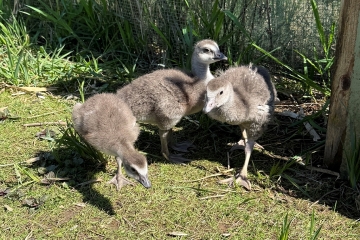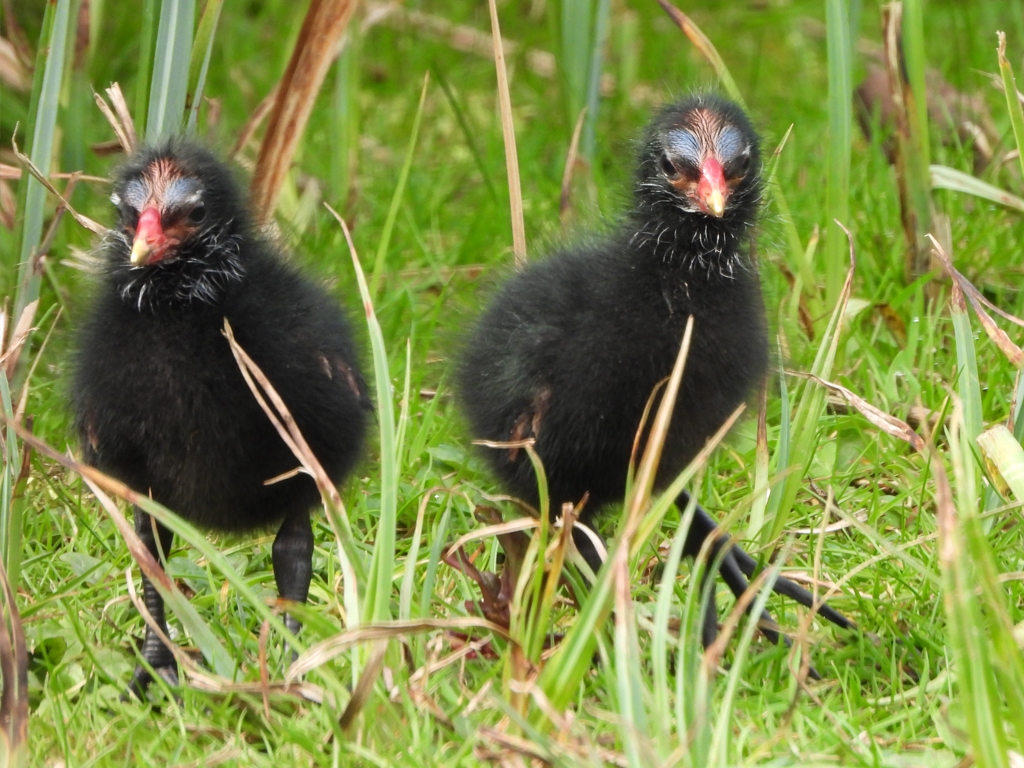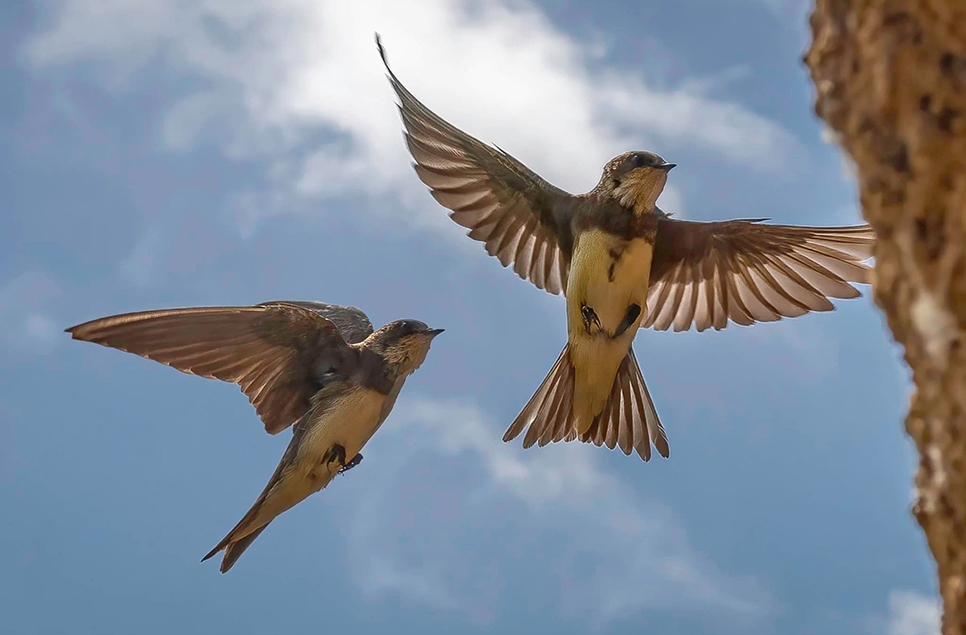Our Keepers are on the hop in spring
There is always stunning wildlife to see at Arundel Wetland Centre but our site is also home to a collection of non-native ducks and geese that tell the story of wetlands around the world. Caring for these birds has our keepers busy year 'round but especially in springtime when nesting begins.
Working with wetland ducks, geese, swans and waders gives our Keepers unrivalled skills in rearing rare species. Some of the birds we keep are part of international breeding programmes. The team excel at raising sea ducks, black-necked grebes and scaly-sided mergansers. Each day the Keepers feed, clean, and care for 30 types of ducks, geese, swans and waders.

This scaly sided merganser chick from Arundel is part of international breeding program
Dinnertime!
Twice a day the keepers feed the ducks in our open exhibits a mixture of grain and a water bird pellet. For the diving ducks in those exhibits we include a floating sea duck biscuits in floating cages that gulls can’t access but the ducks dive into.
The birds in our Coastal Creek aviary have 3 main feeds a day and have access to hoppers that drop out sea duck biscuits. The redshank & avocet waders are given meal worms in a special sand tray three times a day and have bowls with specialist micro pellets.
Greedy grebes
The black-necked grebes have a very high metabolism so are fed six times a day! They also get a varied diet with different food at different times of the day including specialist floating pellet, white bait, meal worms & small brown crickets and low fat meat that is minced.
The Dalmatian Pelicans are offered fish by the keepers six times a day, including at the daily 2 pm Keepers talk at Pelican Cove.
Annually our keepers prepare 1,314 kg of roach, 150 kg of whitebait and 104 kg of meal worms to feed the collection birds.

Our black-necked grebes eat 6 times a day!
Nest box know how
Keepers spend a lot of their time cleaning and working on the upkeep of the exhibits that the birds live in. The keepers count all 283 individual birds in our collection each day to ensure they are safe and well, walking over 20,000 steps a day on average – most of this while wearing wellies!
In spring they put out nest boxes for the ducks and geese. Different birds use different boxes: raised boxes with holes are for tree-nesters like bufflehead ducks, hooded mergansers, Carolina wood duck and the whistling ducks species. Semi-closed boxes are used by Radjah shelduck, Baikal teal, scaly-sided merganser, harlequin duck, long-tailed ducks and common scoter. The keepers put out cut reed and sedge for the trumpeter swans and Bewick’s swans to build their own large nests in their exhibits.
Sometimes the ducks will ignore all the nice, dry boxes and instead build nests in the tall grass. When the keepers can’t find them they search the sedge for secretive birds on nests!
New nursery to open this spring
This spring we are converting our old Pond Explorer building into a Duckery (or duck nursery). This indoor duckery includes an incubator room with viewing windows. This rearing room will be located near to the existing outdoor duckery, where goslings, ducklings and cygnets are kept until they are old enough to go into exhibits. We hope to finish construction in May.
Our grounds and collections team always need volunteers. Check here.
Ready to Visit?
If you've been inspired to visit the varied and beautiful birds in our collection at WWT Arundel this spring, find out more and plan your visit online.
Plan your visit


